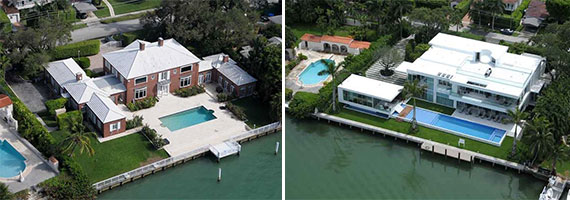Miami Beach city commissioners agreed on Wednesday to send a controversial ordinance that reduces the size of single-family homes to the city’s planning board for consideration.
The proposed ordinance would reduce the maximum lot coverage from 30 percent to 25 percent in all single-family districts. It would also reduce the maximum unit size of a lot from 50 percent to 45 percent. Lots with less than 10,500 square feet could be exempt from the new ordinance.
The ordinance passed a Land Use Committee hearing in September, chaired by its sponsor and commissioner Joy Malakoff. Supporters and opponents of the ordinance angrily faced off against each other at that meeting, but Wednesday’s commission vote sending the ordinance the planning board generated no public comment.
The Malakoff ordinance would increase front setbacks from 20 feet to 30 feet for two-story homes but allow 20-foot setbacks for one-story homes in most cases. Side setbacks would be boosted from 7.5 feet to 10 feet for most properties. Malakoff, who served on a blue-ribbon panel addressing flood-risk, told The Real Deal in September that more green space is needed on Miami Beach to mitigate rising sea levels and build in resilience – and she said setbacks accomplish that.
The proposed ordinance is opposed by many developers on Miami Beach who said the city commission overhauled regulations for the construction of single-family homes less than two years ago, setting the maximum lot coverage at 30 percent and unit size, or the total size of a home compared to the size of a lot, at 50 percent from a previous 70 percent.
Preservationists welcomed those restrictions, but want to further limit the size of new home construction, especially front and side setbacks, which they said reduce pervious land area and can have an adverse visual impact on neighborhoods where many houses were built more than a half-century ago.
The city’s Historic Preservation Board can designate houses as “historic” if they were designed by a prominent architect, or are of historical importance, largely preventing their demolition. But houses built before 1942 that are not considered “historic” but deemed “architecturally significant” fall under the authority of the city’s Design Review Board which can only ask that that their owners examine ways to preserve them.
The planning board will meet on Nov. 24 to consider the new ordinance, before sending the measure back to the city commission for a second reading.
